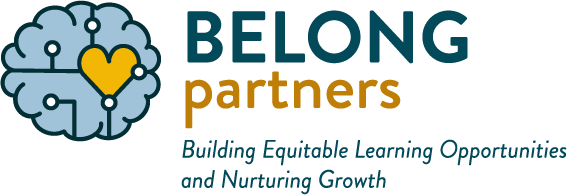
We are all feeling a variety of emotions, from anxiety to fear to joy, as we gear up for the start of this new school year. Transitions are always challenging. But we may be feeling it even more given that the last three years were extremely unpredictable for school communities.
We invite educators to focus on connection and belonging as you are getting ready to welcome students back into your classrooms. Taking time to root down in our purpose and ground ourselves before young people come into our school buildings sets us up for a regulated, connected new school year.
Here are some resources and ideas to support educators and school staff for this upcoming school year:
Give grace to yourself and ground in your why to prepare you to extend grace to your students. Vera Ahiyya shares three questions that help her stay connected to her own why: 1) Why did I get into education? 2) What is it about teaching that I love? and 3) What is it about teaching that keeps me excited?
Take time to get to know your students and build a classroom community before jumping into rules and learning objectives for the year. Practice with connection activities, prioritizing relationship-building, and incorporating student voice from day one.
Center equity in your classroom and school community. For classroom communities to thrive, all students’ identities must be represented and celebrated. Education can be a liberatory tool to fight oppression and build inclusive communities. Listening to student’s perspectives and ensuring your curriculum is representative of your school community is a great place to start (along with this list of tips).
Build rituals and routines at the start, end, and throughout the school day to promote predictability. Students who have experienced trauma thrive in structured environments. Breathing techniques, creating calming spaces, collaborating with students on class norms, utilizing self-regulation cards, and taking brain breaks all help create a trauma-informed classroom.
Develop a realistic plan for dealing with stress. Educators have experienced ongoing vicarious trauma, and your feelings are valid and deserve to be cared for before you’re expected to care for others. Taking care of ourselves looks different for everyone, but the important thing is that you have a realistic routine to sustain energy throughout the school year.
Take time to connect with fellow educators and school staff. Collaborating with co-workers is an excellent way to feel an energizing, shared sense of purpose, work more efficiently and effectively, and learn from one another. We are social beings, and taking time to share and get to know your co-workers helps strengthen the whole school community.
After the uncertainty and trauma of the past few years, it may take some effort to cultivate connection and belonging this new school year in your school community. We hope these resources are helpful and we are here to support you!
If you would like to learn more about creating classroom community or any other aspect of our work, check out our upcoming workshops schedule, or please contact us at info@belongpartners.org or 206-782-1595.
Kayla Blau is a Sound Discipline Facilitator.
